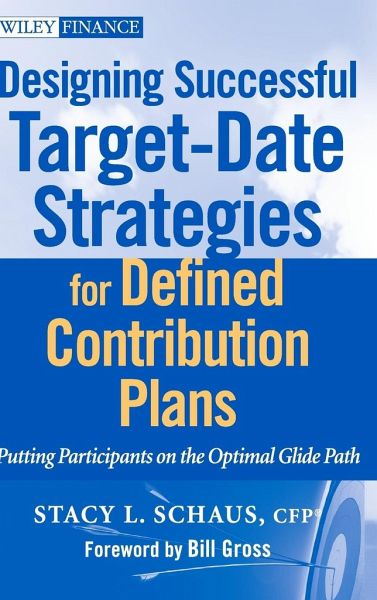
Contribution Plans
Versandkostenfrei!
Versandfertig in über 4 Wochen
54,99 €
inkl. MwSt.
Weitere Ausgaben:

PAYBACK Punkte
27 °P sammeln!
The ultimate guidebook for navigating the new world of pensions and retirement plansIn the wake of the explosive growth of defined contribution (DC) plans invested with target date strategies, and the understanding of how important these strategies can be in effectively meeting retirement income goals, plan sponsors are seeking more optimal target date approaches. This timely book provides you with in-depth answers from the nation's most qualified and experienced experts to pressing questions about DC plan design.Presents the views of individuals from all across the marketIncludes a broad rang...
The ultimate guidebook for navigating the new world of pensions and retirement plans
In the wake of the explosive growth of defined contribution (DC) plans invested with target date strategies, and the understanding of how important these strategies can be in effectively meeting retirement income goals, plan sponsors are seeking more optimal target date approaches. This timely book provides you with in-depth answers from the nation's most qualified and experienced experts to pressing questions about DC plan design.
Presents the views of individuals from all across the market
Includes a broad range of plan sponsors both in the corporate world and in the public/government sectors
Offers views from consultants and advisors from the most respected firms, academics who teach at leading universities, and other innovative leaders
With a broad range of knowledge and insight, Designing Successful Target Date Strategies in Defined Contribution Plans helps you understand the evolution of DC plans, pulls together all angles of what it takes to develop custom target date strategies, and provides you with a look ahead to the future.
In the wake of the explosive growth of defined contribution (DC) plans invested with target date strategies, and the understanding of how important these strategies can be in effectively meeting retirement income goals, plan sponsors are seeking more optimal target date approaches. This timely book provides you with in-depth answers from the nation's most qualified and experienced experts to pressing questions about DC plan design.
Presents the views of individuals from all across the market
Includes a broad range of plan sponsors both in the corporate world and in the public/government sectors
Offers views from consultants and advisors from the most respected firms, academics who teach at leading universities, and other innovative leaders
With a broad range of knowledge and insight, Designing Successful Target Date Strategies in Defined Contribution Plans helps you understand the evolution of DC plans, pulls together all angles of what it takes to develop custom target date strategies, and provides you with a look ahead to the future.













